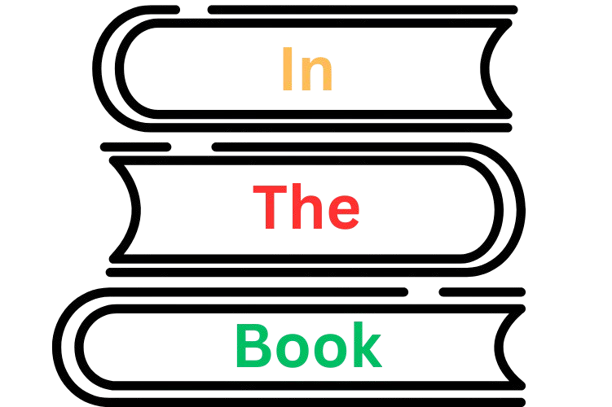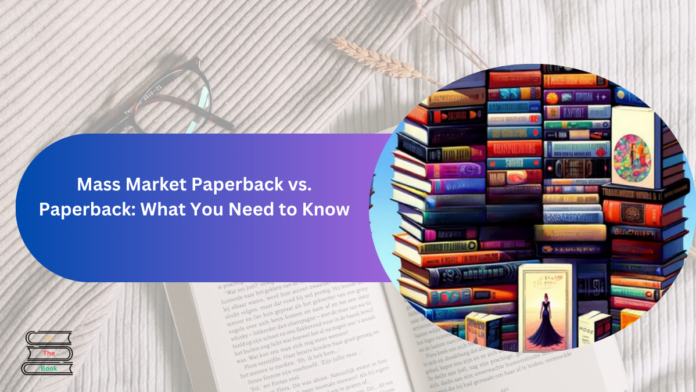This post delves into the distinct characteristics that set mass-market paperbacks apart from their larger trade paperback counterparts. We’ll examine the economic, aesthetic, and cultural forces that have influenced these formats, providing an in-depth understanding of their unique appeal to readers, publishers, and authors.
In this post, we’ll explore the following key aspects.
- Understanding the unique characteristics of mass market paperbacks and how they differ from trade paperbacks.
- Uncovering the rich legacy of mass-market paperbacks dates back to the 1930s.
- Uncovering the factors that made mass-market paperbacks a staple in newsstands and drugstores and the impact of their striking covers on their massive popularity.
- Examining the controversy surrounding mass market paperbacks, once deemed ‘degenerate’ and even sparked a U.S. House of Representatives inquiry in the 1950s.
Contents
What is a Mass Market Paperback?
According to Collins Dictionary, mass-market paperbacks are affordable, portable books, usually around 4 x 7 inches in size. They’re widely available in various retail outlets, including bookstores, supermarkets, newsstands, and drugstores.
Their compact size has made them affectionately called “pocket books.” Designed for widespread readership, they fit easily into a purse or back pocket, making them a great choice for reading on the go. While the text font may be smaller, the trade-off is a convenient, take-anywhere format.
The History and Evolution of Mass-Market Paperbacks
The concept of affordable, portable books has been around since the 19th century, with yellowbacks and dime novels. However, the modern mass-market paperback emerged in 1930s America as reprints of popular hardcover titles. Publishers soon shifted focus to new works, including pulp fiction and literary pieces, appealing to a broad audience.
Distribution and Popularity
Mass-market paperbacks’ innovative distribution strategy, pioneered by Robert DeGraff of Pocket Books, expanded their reach beyond bookstores to newsstands, drug stores, and other periodical outlets, revolutionizing the industry.
The books’ eye-catching covers, featuring sensational and provocative artwork, further boosted their popularity. Although they faced scrutiny from the U.S. House of Representatives in 1952, mass-market paperbacks have endured, proving their staying power.
The Economics of Mass-Market Paperbacks: A Cost-Effective Option
Mass-market paperbacks are the thrifty choice for readers and publishers alike! Made from affordable, non-acid-free paper, they offer a lower-cost alternative to their hardcover counterparts. With smaller profit margins, they’re often the go-to format for books that won’t be bestsellers. But here’s the twist: many modern first editions, especially in genre fiction, are initially released as mass-market paperbacks, making them a collector’s treasure trove!
The Distinctions Between Mass Market Paperbacks and Paperbacks
While many use “paperback” and “mass market paperback” interchangeably, the two have key differences. Let’s explore:
- Size: Mass market paperbacks typically measure 4.5 x 7 inches, whereas paperbacks (also known as trade paperbacks) come in various larger sizes, making them easier to read but less portable.
- Paper Quality: Mass-market paperbacks use lower-quality, non-acid-free paper, which makes them more fragile and less durable. In contrast, trade paperbacks use better-quality, acid-free paper that extends the book’s lifespan.
- Distribution: Mass-market paperbacks have a wider distribution network and are available in various retail outlets beyond bookstores. Trade paperbacks are mainly found in bookstores and online.
- Pricing: Mass-market paperbacks are generally cheaper, prioritizing affordability over quality. Trade paperbacks cost more, investing in better paper, cover design, and typography.
- Content: Mass-market paperbacks often feature genre fiction like romance and science fiction, while trade paperbacks encompass a broader range, including nonfiction, classics, and literary works.
Understanding these differences sheds light on the unique characteristics of each format.
Final thoughts
Mass market paperbacks have demonstrated remarkable endurance, thriving since the 1930s and weathering the moral uproar of the 1950s. Their covers, a true reflection of their diverse appeal, have tantalized and titillated readers with vibrant and sometimes controversial artwork, making them a fascinating and complex aspect of literary history – a true mixed bag.
The mass market paperback’s widespread availability was a game-changer, democratizing reading and making books accessible. This revolution in reading sparked a dilemma for book lovers: choose the convenient but fragile mass-market edition or the sturdier trade paperback. While hardcovers and e-books have their appeal, it’s hard to deny the enduring charm and cultural significance of these humble, pocket-sized powerhouses.
Casual readers and avid book collectors can appreciate the significance of mass-market paperback. While they may not always be the most celebrated format, they offer unmatched convenience and portability, making reading accessible anywhere, anytime. If you’ve ever slipped one into your bag or pocket, you’ll understand the unique appeal of these compact companions that make reading on the go a breeze.
Click Here to Read More

Ross, an exam specialist with a passion for education, writes comprehensive articles on exam results and admit cards. His expertise ensures students receive reliable information and useful tips to excel in their exams.



























